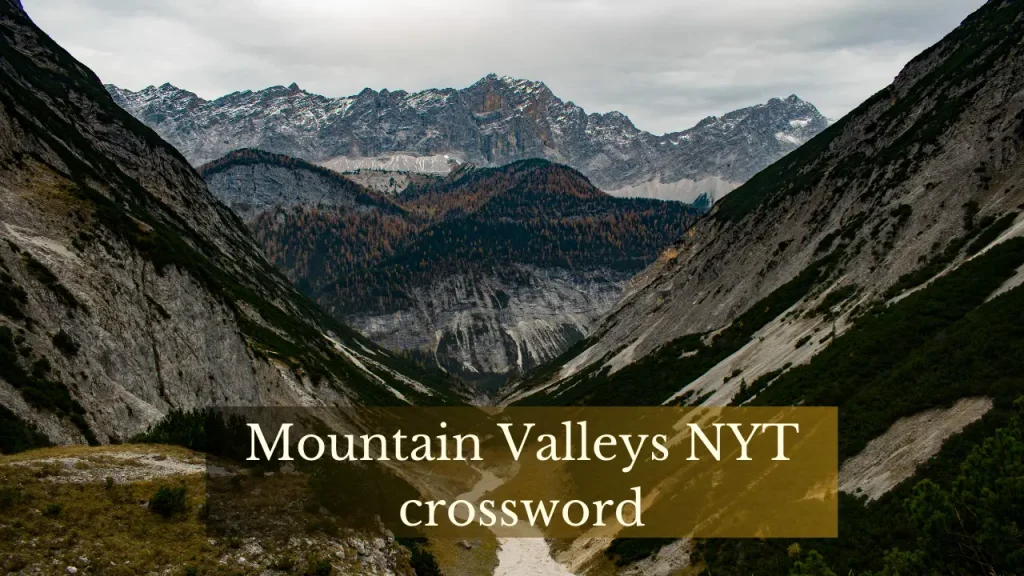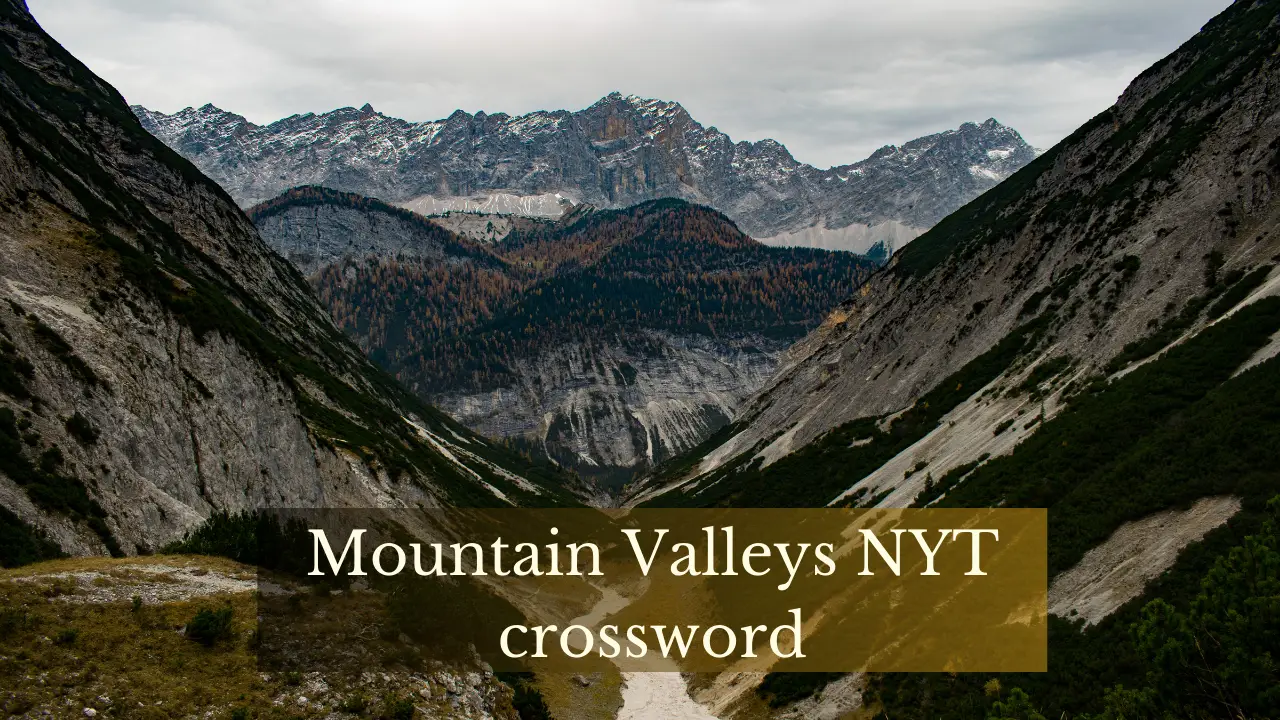Mountain Valleys NYT Crossword

Mountain Valleys NYT Crossword, Crossword puzzles have fascinated enthusiasts for decades, offering both a mental challenge and a source of enjoyment. Among the various types of crosswords, the New York Times crossword stands out for its complexity and intellectual rigor.
Known for its cleverly crafted clues and engaging themes, the NYT crossword often features diverse topics that capture the imagination of solvers. One such intriguing theme is mountain valleys.
This article explores how mountain valleys are represented in NYT crosswords, providing insights into their significance and offering tips for solving related clues.
Understanding the Theme
Mountain valleys are low areas between hills or mountains, formed by geological processes like erosion and glaciation. Mountain valleys are crucial for various reasons. They can be fertile lands supporting agriculture, and they often host unique ecosystems.
For instance, the Great Rift Valley in East Africa, stretching about 6,000 kilometers, is renowned for its rich biodiversity and archaeological significance.
In crosswords, mountain valleys are represented to add a geographical touch, blending knowledge of natural landscapes with the puzzle-solving experience.
Mountain Valleys in Crossword Puzzles
Mountain valleys are featured in crosswords due to their geographical and cultural significance. Crosswords often use these valleys to challenge solvers’ knowledge of geography and to add a thematic element to the puzzle.
Common clues might reference famous valleys or geographical features, requiring solvers to recall specific names or characteristics.
For example, clues might include “Famous valley in California” or “Valley in the Swiss Alps,” leading to answers like “Yosemite” or “Rhone.”
Crossword Puzzle Basics
How NYT Crosswords Work
The New York Times crossword puzzle is known for its structured format. It typically consists of a grid with 15×15 squares for daily puzzles and 21×21 for the Sunday edition. Clues are categorized into “Across” and “Down,” with each square in the grid representing a letter in the answer.
The puzzles often incorporate themes that tie the clues together, making each puzzle a unique challenge. Themes can range from historical events to geographical features like mountain valleys.
Importance of Crossword Themes
Themes are essential for adding depth and cohesion to crossword puzzles. They provide a unifying concept that enhances the solver’s experience by making the clues more interconnected.
For instance, a theme like “Mountain Valleys” can make a puzzle more engaging by focusing on a specific aspect of geography.
Other popular themes might include “Famous Authors,” “Movies of the 80s,” or “European Capitals,” each offering a different kind of challenge.
Focus on Mountain Valleys
Popular Mountain Valleys in Crossword Puzzles
Several mountain valleys frequently appear in crosswords due to their prominence and recognizability. Some well-known examples include:
- Yosemite Valley: Located in California’s Sierra Nevada, this valley is famous for its stunning granite cliffs and waterfalls.
- Rhone Valley: Found in Switzerland and France, this valley is known for its vineyards and scenic beauty.
- Great Rift Valley: This valley stretches across East Africa and is notable for its geological activity and wildlife.
These valleys are often used in puzzles because of their global recognition and distinctive features.
Crossword Clues and Answers for Mountain Valleys
Crafting crossword clues for mountain valleys involves finding a balance between challenging and accessible. Clues might reference geographical features, notable landmarks, or historical facts. For example:
- Clue: “California valley known for its giant sequoias”
Answer: “Yosemite” - Clue: “Swiss valley famous for its wine production”
Answer: “Rhone”
These clues help solvers recall specific details about the valleys and add a layer of educational value to the puzzle.
Answering the Crossword
Mountain Valleys NYT Crossword – Answers
When tackling a crossword puzzle themed around mountain valleys, it’s helpful to have a list of common clues and answers. Here are a few examples from recent NYT puzzles:
- Clue: “Valley in the Sierra Nevada”
Answer: “Yosemite” - Clue: “Famous wine-producing valley in France”
Answer: “Rhone” - Clue: “African valley known for its wildlife”
Answer: “Great Rift”
Understanding these clues can make solving themed crosswords more enjoyable and educational.
Tips for Solving Crossword Clues
Strategies for Solving Themed Crosswords
When solving crosswords with a theme like mountain valleys, consider these tips:
- Focus on Theme Clues: Pay special attention to clues related to the theme. They often provide hints for solving other parts of the puzzle.
- Use Crossword Dictionaries: Tools and dictionaries can help when you’re stuck on specific clues.
- Break Down Clues: Analyze each clue and break it into smaller parts to find connections.
Resources for Crossword Enthusiasts
Several resources can aid in crossword solving:
- Books: “The New York Times Crossword Puzzle Dictionary” is a comprehensive guide.
- Websites: Sites like XWord Info and Crossword Solver offer valuable assistance.
- Apps: Crossword apps like “NYT Crossword” and “Crossword Puzzle Redstone” provide practice and tips.
Conclusion
The NYT crossword puzzle, with themes like mountain valleys, offers a unique blend of challenge and learning.
By incorporating facts about mountain valleys into the clues, the puzzles not only entertain but also educate solvers about significant geographical features.
Embracing themed crosswords enriches the solving experience, making it both intellectually stimulating and enjoyable. For crossword enthusiasts, exploring different themes provides an opportunity to expand their knowledge and improve their puzzle-solving skills.



No Comment! Be the first one.